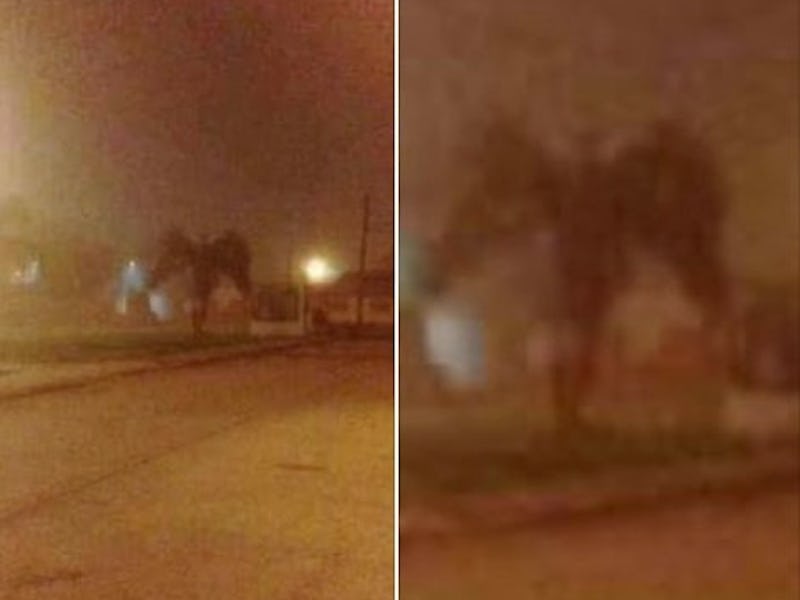In more benign eras, people have seen Jesus in toast and Elvis in a potato chip. But this is 2017, and when people see things that aren’t there, they see the Devil himself.
Over 80,000 people have shared a photo uploaded to Facebook by Richard Christianson, an Arizona resident who snapped a photo of what appears to be a huge winged demon hanging out by a curb under a streetlamp, Thrillist reports. Among the 9,000 or so comments are conjectures that the photo is evidence of a “dark lord,” Yu-Gi-Oh’s Obelisk the Tormentor, or a Babylonian wind god named Pazuzu. It is, however, most likely just a really symmetrical palm tree. But we can’t criticize speculators for having overactive imaginations. They’re just seeing what they are wired to see.
Richard Christianson has since deleted this post on Facebook, but here's a screenshot.
As psychologists who study pareidolia explain, the brain is accustomed to visual patterns, and thus it wants to see what it is accustomed to seeing in context. When a brain receives a visual suggestion that doesn’t make sense, like a shadow that suggests both a vague palm tree and a winged humanoid, it tends to “fill in” the information that’s needed to match up with what it expects. This reasoning, which is referred to as a “top-down” approach to visual processing, explains why we see spread-open butt cheeks in indistinctly shaped mittens on a McDonald’s cup and images of the Virgin Mary in a spotty flour tortilla. The particular prevalence of face pareidolia — that is, seeing faces when they are not actually there — suggests that humans are hardwired to seek out faces even in the vaguest circumstances.
Arizona demon: Palm tree or Yu-Gi-Oh villain?
But if our brains want to see what they expect to see, what does it mean when our brains fill in the visual information that makes us see a demon instead of a palm tree? If the current top-down theory is correct, the suggestion is that people who see a demon in the Arizona photo are more accustomed to seeing demon-like visuals than those who don’t. This hypothesis is bolstered by the familiarity that the post’s commenters seem to have with demons from board games and ancient mythology.
Some researchers have reported that the tendency to experience pareidolia is also influenced by the mental state of the viewer. As scientists at the Annual Meeting of the Association for the Scientific Study of Consciousness pointed out in 2015, neurotic people tended to see meaningful patterns in random noise more than those who were not classified as neurotic. (Whether the current political climate has actually exacerbated these psychological phenomena in the public, however, remains to be shown scientifically.)
So, if you see the devil’s wings and not the branches of a swaying palm in this photo, don’t be too concerned about your brain — it’s just doing what it’s accustomed to doing. You may, however, want to reconsider what you’ve been looking at lately.
